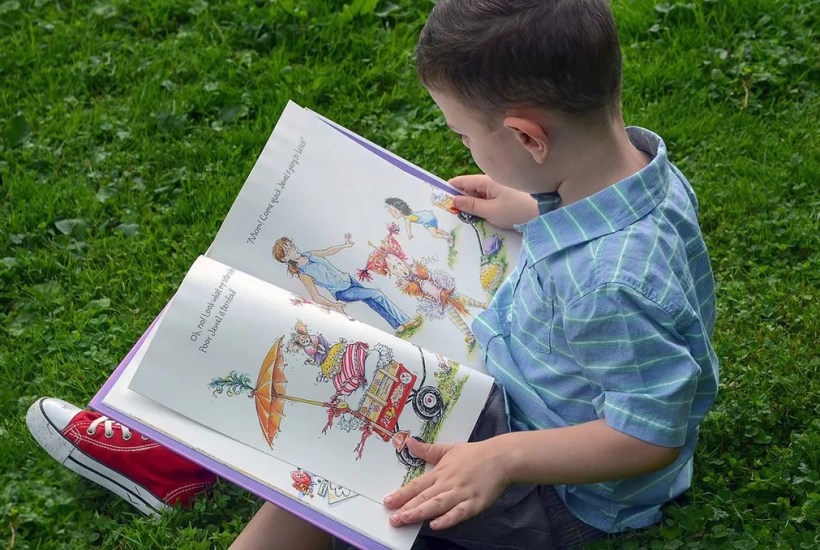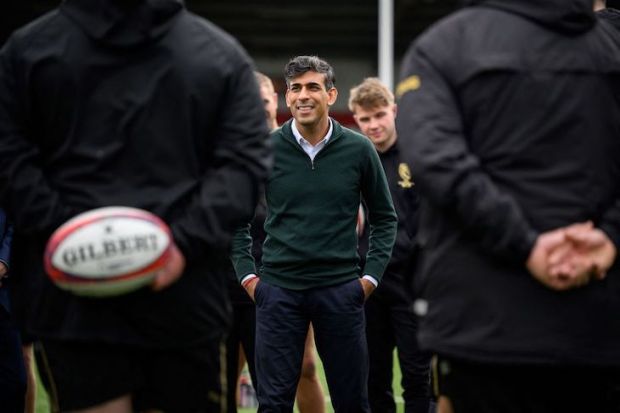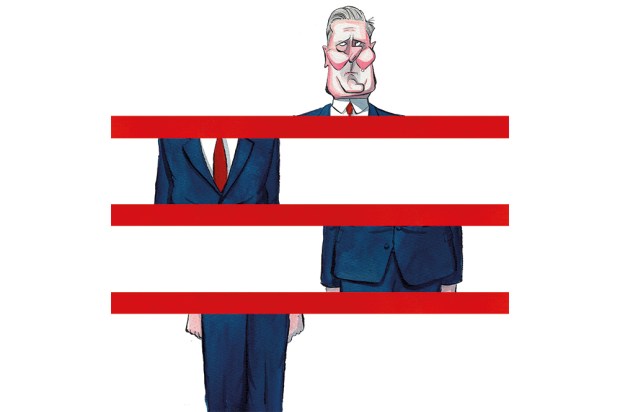To start a fire, you need a match, something that burns and air. So to speak. If you don’t have a match, you can use flint, but that takes patience and skill. What you burn should have a low combustion point. And the air should have sufficient oxygen.
Starting a fire, like starting anything, has predicates: the things you need before you can truly started. But when it comes to education, some people believe we can go directly to the steak sizzling on the grill, never mind the preliminaries. This hastiness never works out very well.
The latest example is the slow death of “balanced literacy.” That’s the approach to teaching children how to read that was championed by Professor Lucy Calkins, from her perch at Columbia University’s Teachers College Reading and Writing Project. The university has closed the project in the shadow of a decision by the New York Public Schools to ditch “balanced literacy” in favor of phonics.
“Balanced literacy” swept through the nation’s elementary schools in the 1990s and it still has widespread support among elementary school teachers. But after dismal and ever-declining scores on reading tests of students who were instructed through balanced literary curricula, many schools are switching back to what are now called “evidence-based” approaches. Essentially this means teaching children to sound out unfamiliar words. What exactly “balanced literacy” offered as an alternative is not easy to pin down. Proponents explain it in various ways, but it always seems to emphasize having students work in groups and trying to catch the general sense of what they read. Critics point to the ease with which children can just by-pass anything unfamiliar or difficult.
Balanced literary sounds like more fun than trying to decipher words like “enough” on the basis of the English alphabet. The small “balanced literacy” groups, by contrast, are encouraged to sing and to play, use puppets and find “reading buddies.” I have no first-hand experience with these pedagogical delights. In my day we scratched a reed stylus on a clay tablet. But it is clear that some small (very small) percentage of students transcended Calkinism and learned to read anyway. At least graphic novels.
But I cite this venture in misdirected teaching mainly because it illustrates how determined our teachers and our schools have been to skip over the hard and sometimes unpleasant preliminaries. Balanced literary, like its faddish predecessor “whole language,” was meant to entice children to the pleasures of literacy without the dreariness of sounding out, mispronouncing and overcoming myriad irregularities and contradictions of English spelling. But without matches (or flint) and tinder, you don’t get a fire.
But how basic is basic? This is a much deeper question than how to start teaching six- or seven-year-olds to read. As an anthropologist, I think immediately of the evolution of the human hand. Without our opposable thumbs and hammer grip, no one would be starting a fire with a flint. Nor would it work very well if we couldn’t walk on two legs and carry firewood. Nor would it make sense if we lacked the ability to teach our skills to others. Controlled fire-making is an affair for big-brained hominids.
The “how basic?” question can be approached other ways by psychologists and philosophers, but my real point is that there are prerequisites to learning anything. Sometimes this is obvious. We don’t try to teach calculus to students who haven’t learned algebra, or algebra to those haven’t learned arithmetic. But it isn’t always obvious. For many generations, children were taught to read with fables and short works of fiction. Along came the Common Core State Standards around 2011 with the edict to demote literature in favor of non-fiction “documents” and learning to use such “evidence” to construct arguments. Literature has fought its way back into the curriculum, but what were the advocates of Common Core thinking?
Questions of what should come first vex education at every level. Right now we are in the midst of a heated national debate over the place of diversity-equity-inclusion (DEI) in schools, from K-12 through college, and professional schools in law and medicine. What is the right age to teach children that America is and always has been “systemically racist?” The idea is false and shouldn’t be taught at all, but it has plenty of adherents, especially among teachers. So the question has moved to the foreground of whether and how students should be taught about the history of slavery, racial discrimination, and other forms of racial injustice? And when this teaching begins, how can it be kept free of indoctrination?
William Galston, writing in the Wall Street Journal under the headline “Indoctrination Has No Place in Education,” argues against permitting DEI in the college curriculum, not because it is false, but because it “narrows the range of argument to which university students are exposed.” But by the same token he rejects Christopher Rufo’s call for a form of collegiate education aimed at persuading student “to embrace the beliefs and traits of character needed to sustain the form of government in which they live.” (Galston’s words, not Rufo’s.) Rufo’s letter, also in the Wall Street Journal, “Education Is a Political Question, charges that Galston “mistakes modern liberal shibboleths for ‘classical liberal education.’”
The Galston-Rufo divide strikes me as important, and I come out on Rufo’s side. That’s because Galston’s idea of civics education based on his own experience is an imaginary bubbling pot of wonderful ideas with no fire beneath it. He ignores what makes those ideas vibrant and compelling in the first place. In college Galston read Rousseau, Nietzsche, the Federalist Papers, Madison’s notes from the Constitutional Convention, Frederick Douglass, and more. That’s excellent, and though it was probably a rare experience even in Galston’s undergraduate days, these days it is practically non-existent, save perhaps at Hillsdale, Patrick Henry and a few other off-the-map institutions. I don’t imagine many students raised on “balanced literacy” will be tackling Rousseau or Madison anytime soon, and I don’t know of any public university that offers such a curriculum.
Galston’s position is not his alone. When critics decry the DEI-style indoctrination of students, the DEI defenders complain loudly that those critics are promoting censorship and the “free market of ideas” should permit college professors or public school teachers to teach whatever they judge best. That view has its attractions. We don’t want a curriculum of narrow orthodoxies or mindless flag-waving, whether that’s Old Glory or “Climate Change Is Real.” Ideology has to be kept in check.
But like phonics and like fire, ideology can’t be banished altogether. A form of instruction that inculcates hatred of one’s own nation and its founding principles is as insupportable as reading instruction that banishes the alphabet. Elevating “anti-racism,” climate catastrophism, gender fluidity, post-colonialism or other such doctrines to central places in what we teach in school and college is a recipe for undermining the mental health of Americans, and the prosperity and welfare of our community as a whole.
The mental health component is perhaps most in need of attention. The astonishing growth among college students who report “serious psychological distress” — 77 percent as on 2022 — more than 50 percent increase since 2013 — represents a nation that has lost its ability to inspire confidence, hope and resiliency in a whole generation. I don’t doubt that the nihilistic and despairing ideologies taught in the classrooms from elementary school through college have a lot to do with this.
The Rufo-ian solution (certainly not the Rousseauian one) is a plausible answer. Pay serious attention to the founding principles of the United States; the history of its accomplishments; and the noble and heroic sacrifices that made those accomplishments possible, and we cure many a neurosis. This is not to say that we should blot out the wrongs and injustices that are also part of our history. Those can and should be told too, but they are the complications, not the main story. Let’s start with the basics.
The post The slow death of ‘balanced literacy’ appeared first on The Spectator World.
Got something to add? Join the discussion and comment below.
Get 10 issues for just $10
Subscribe to The Spectator Australia today for the next 10 magazine issues, plus full online access, for just $10.




















Comments
Don't miss out
Join the conversation with other Spectator Australia readers. Subscribe to leave a comment.
SUBSCRIBEAlready a subscriber? Log in